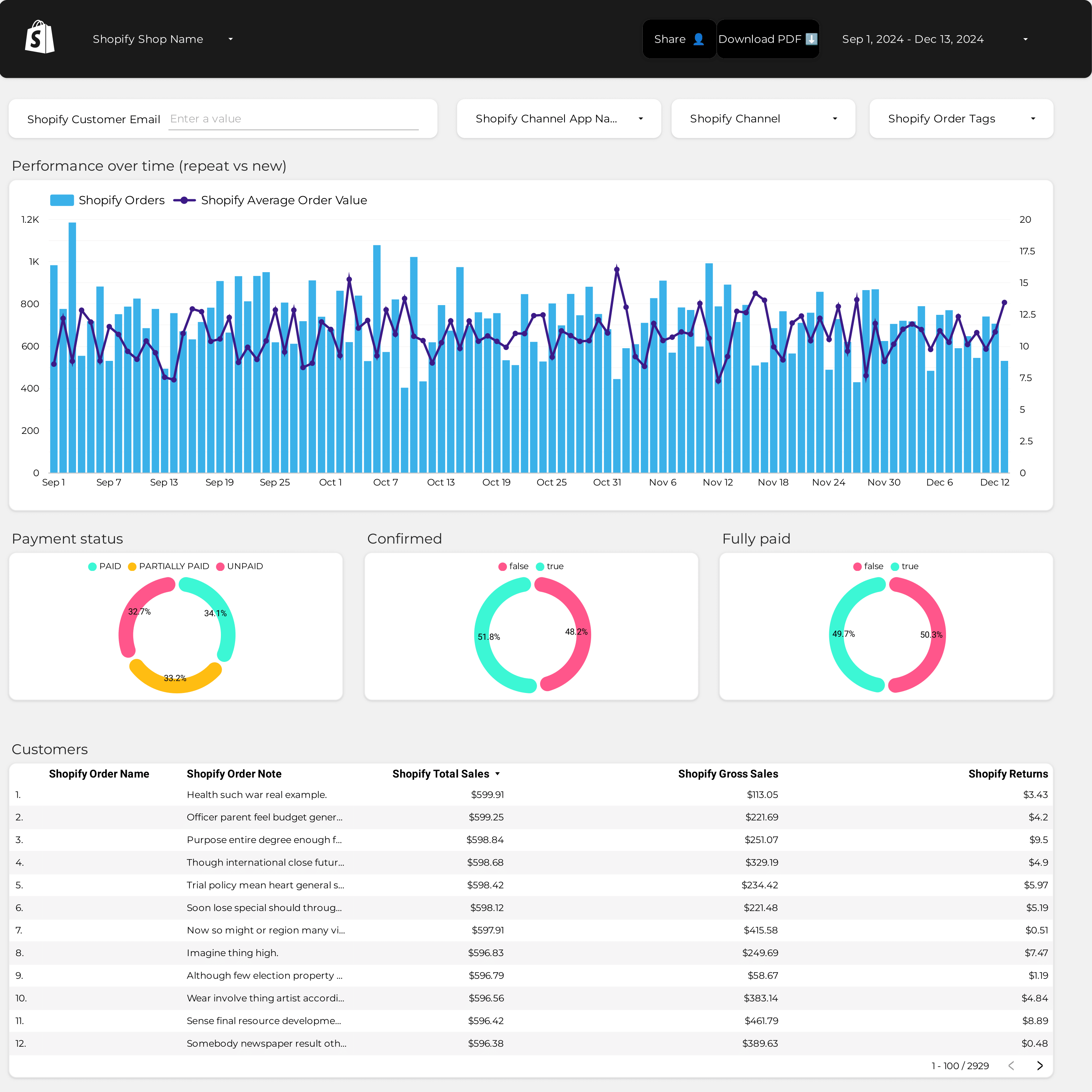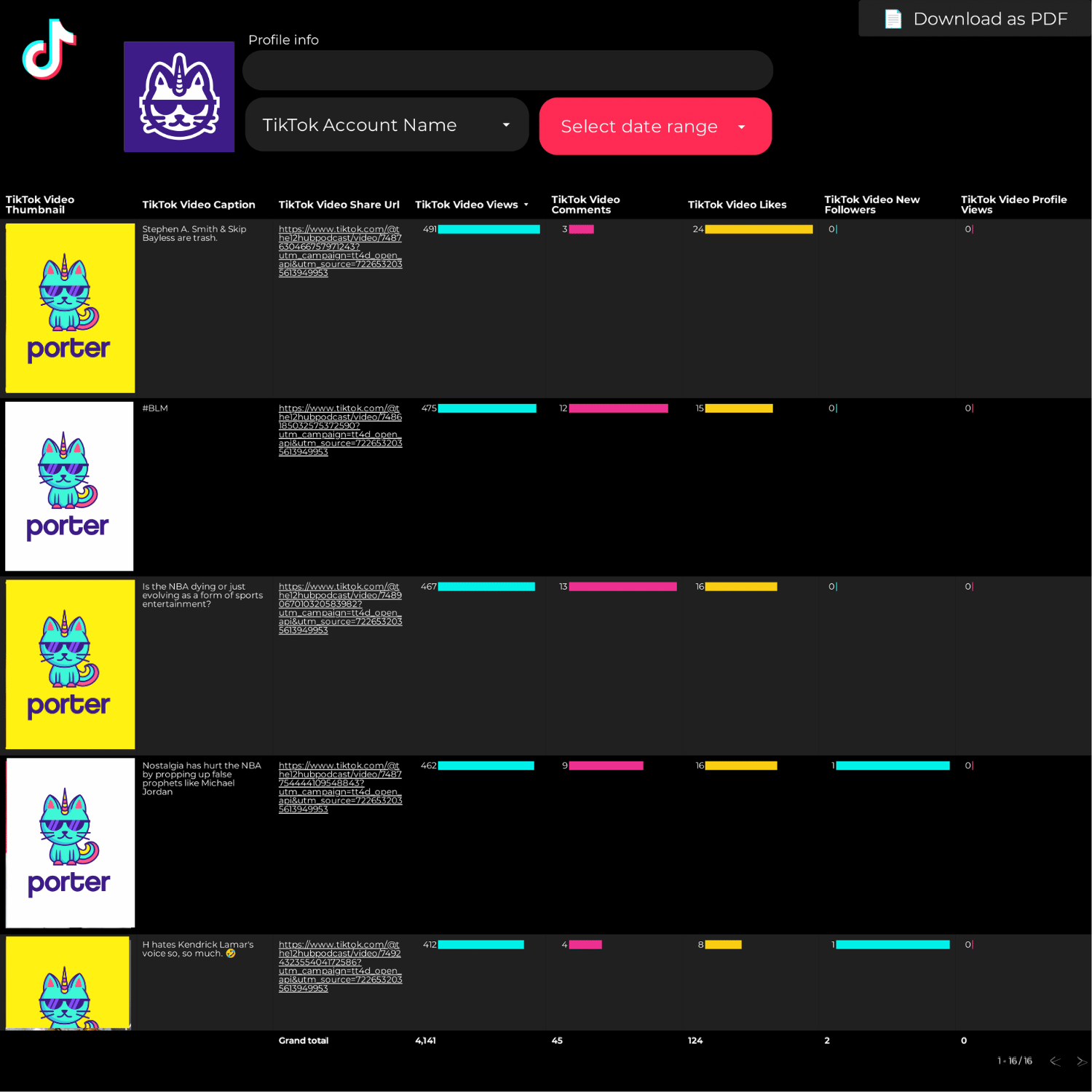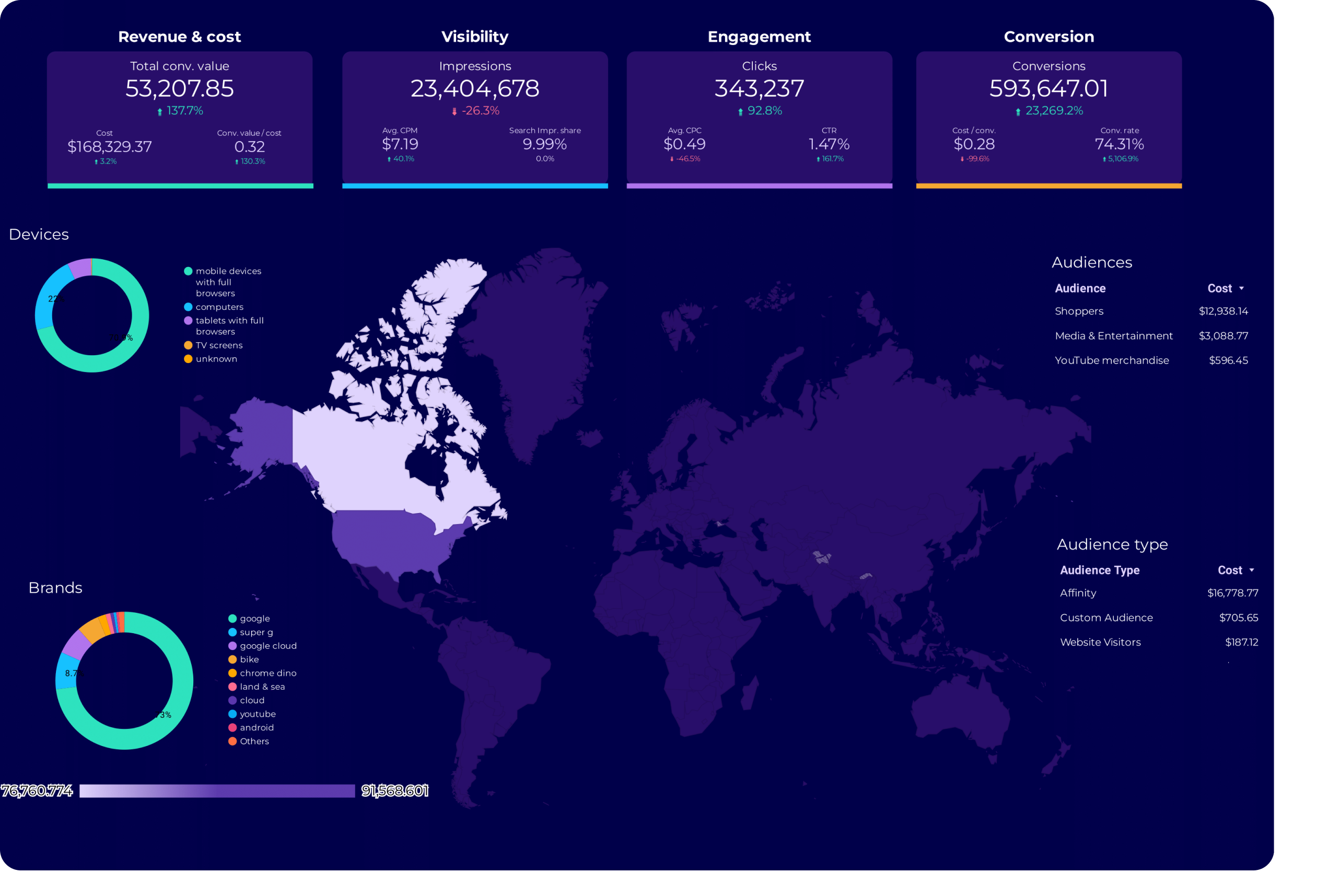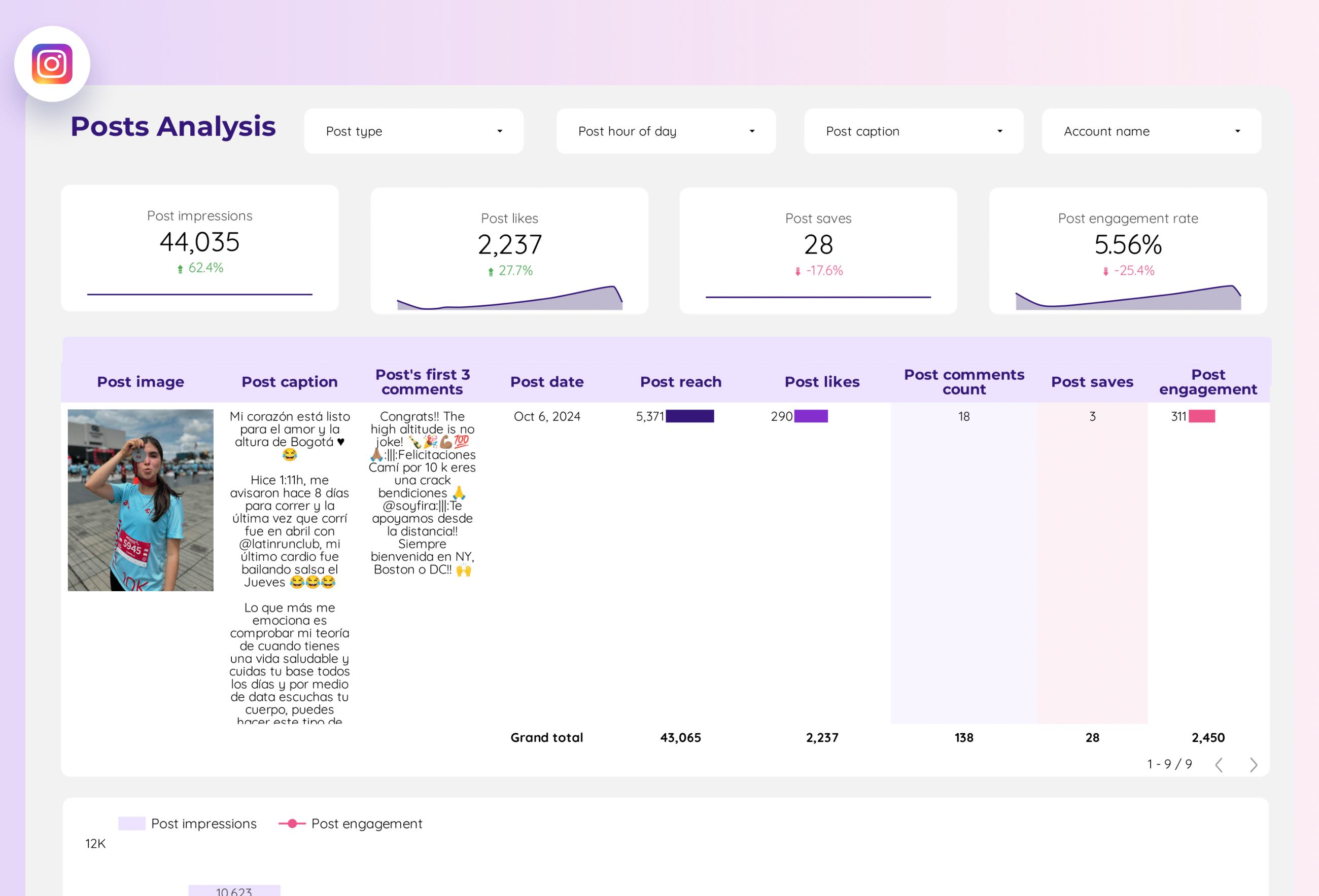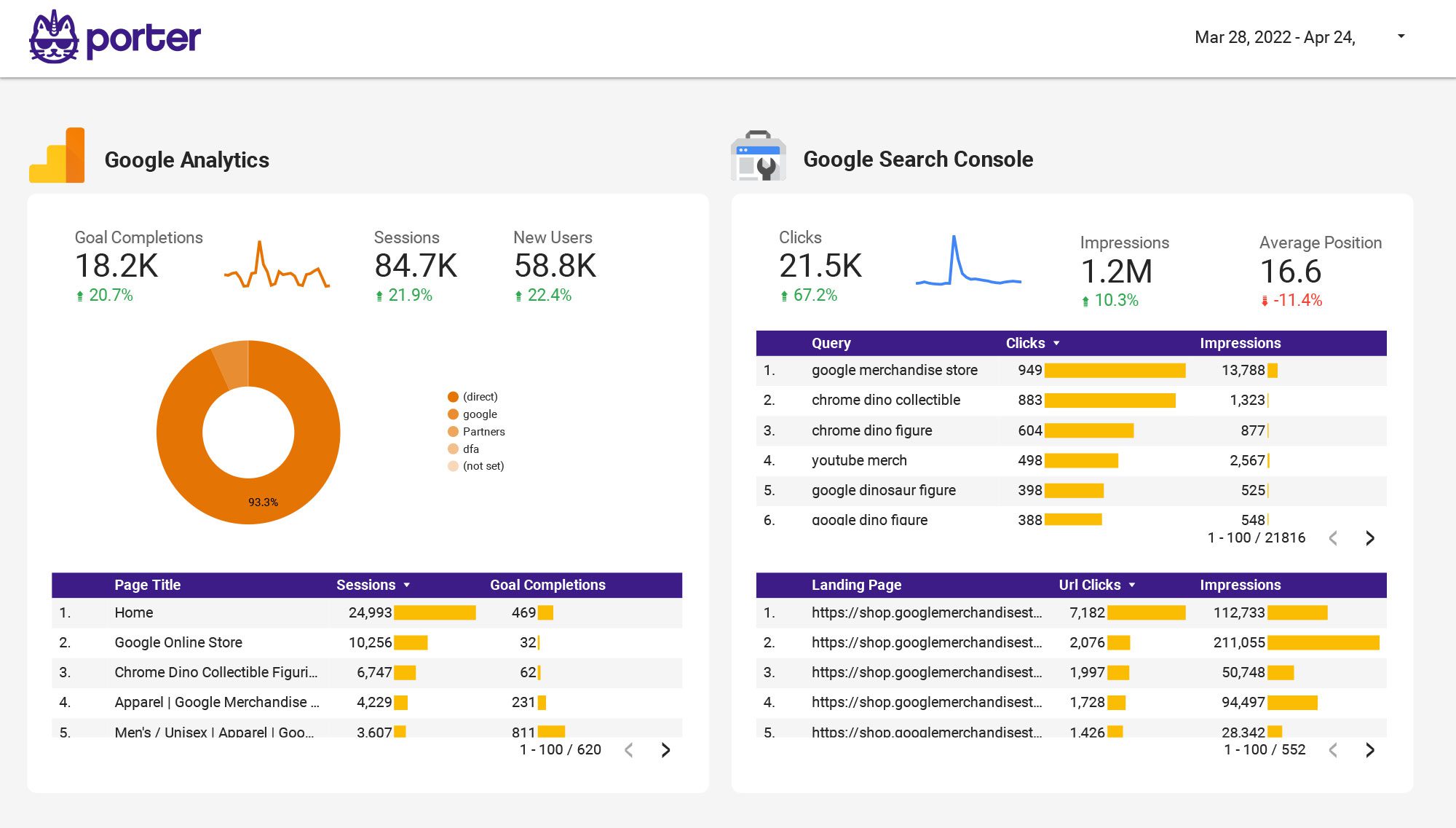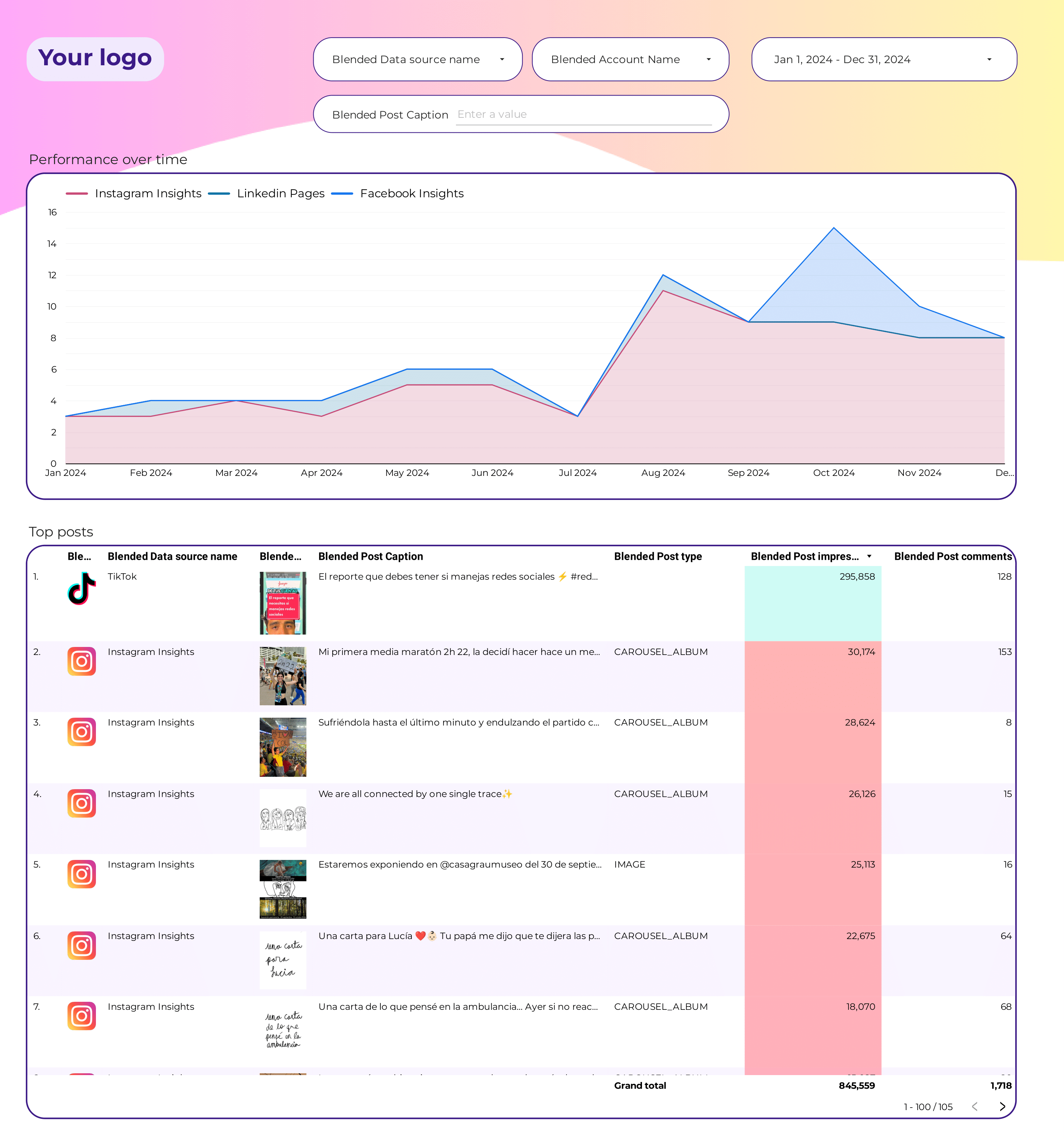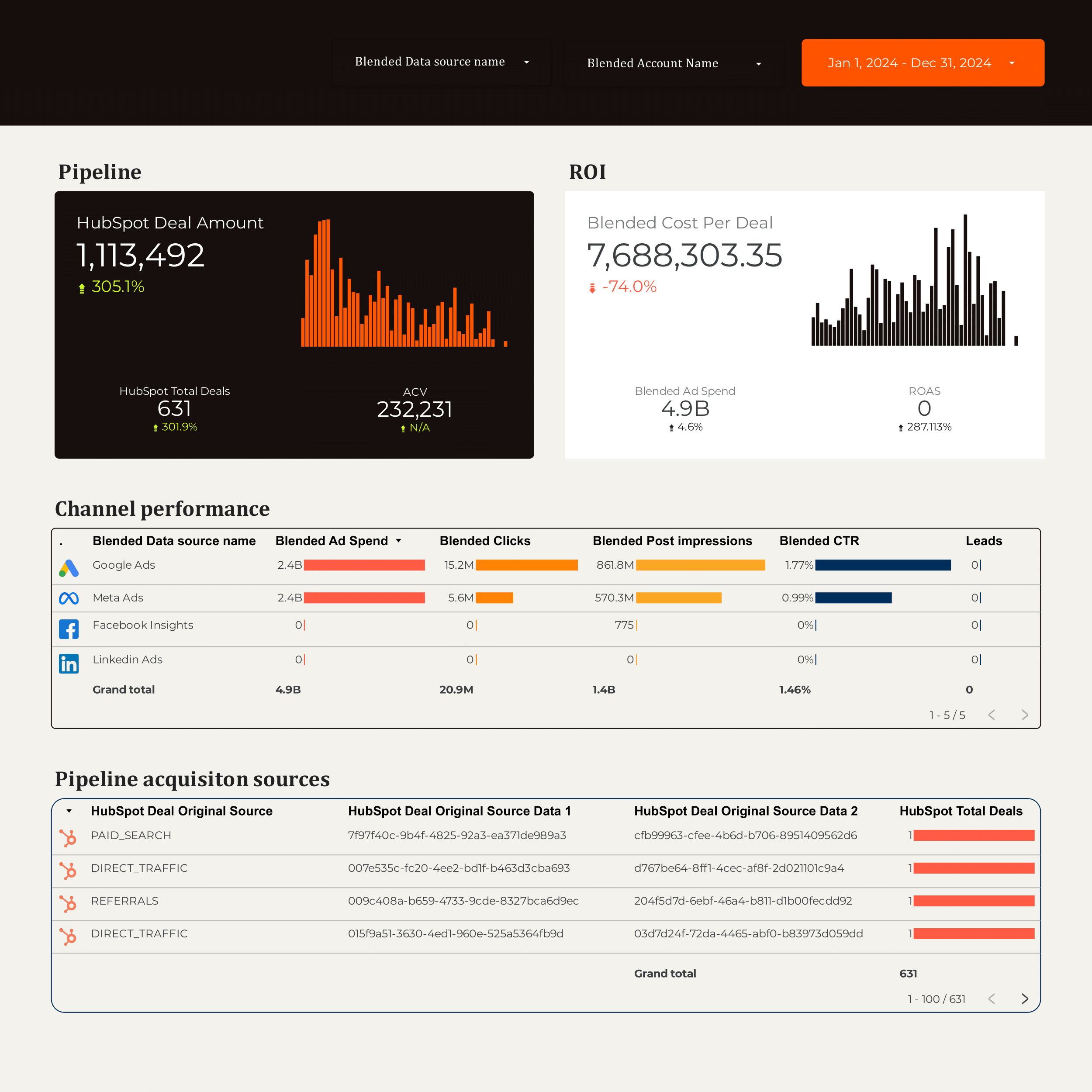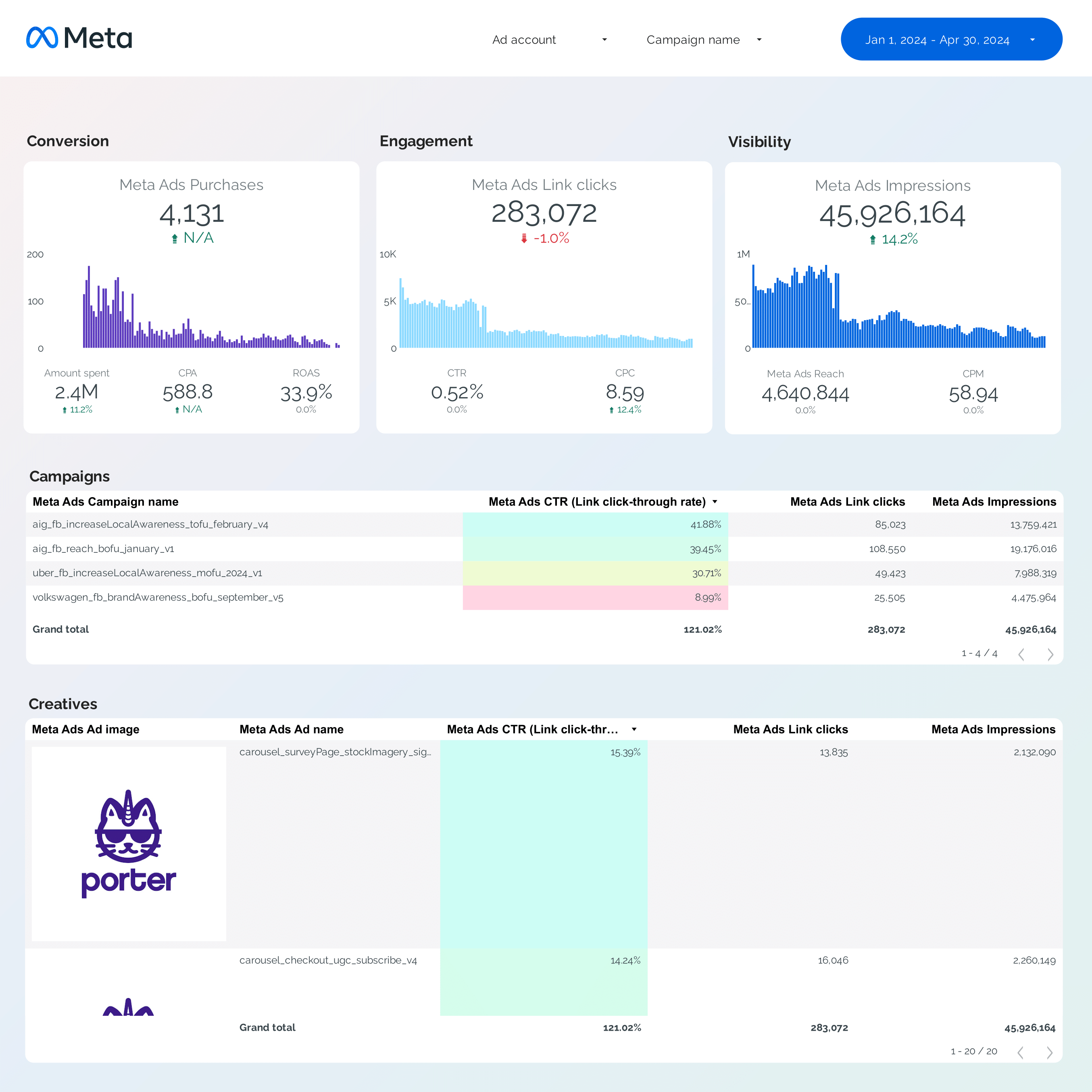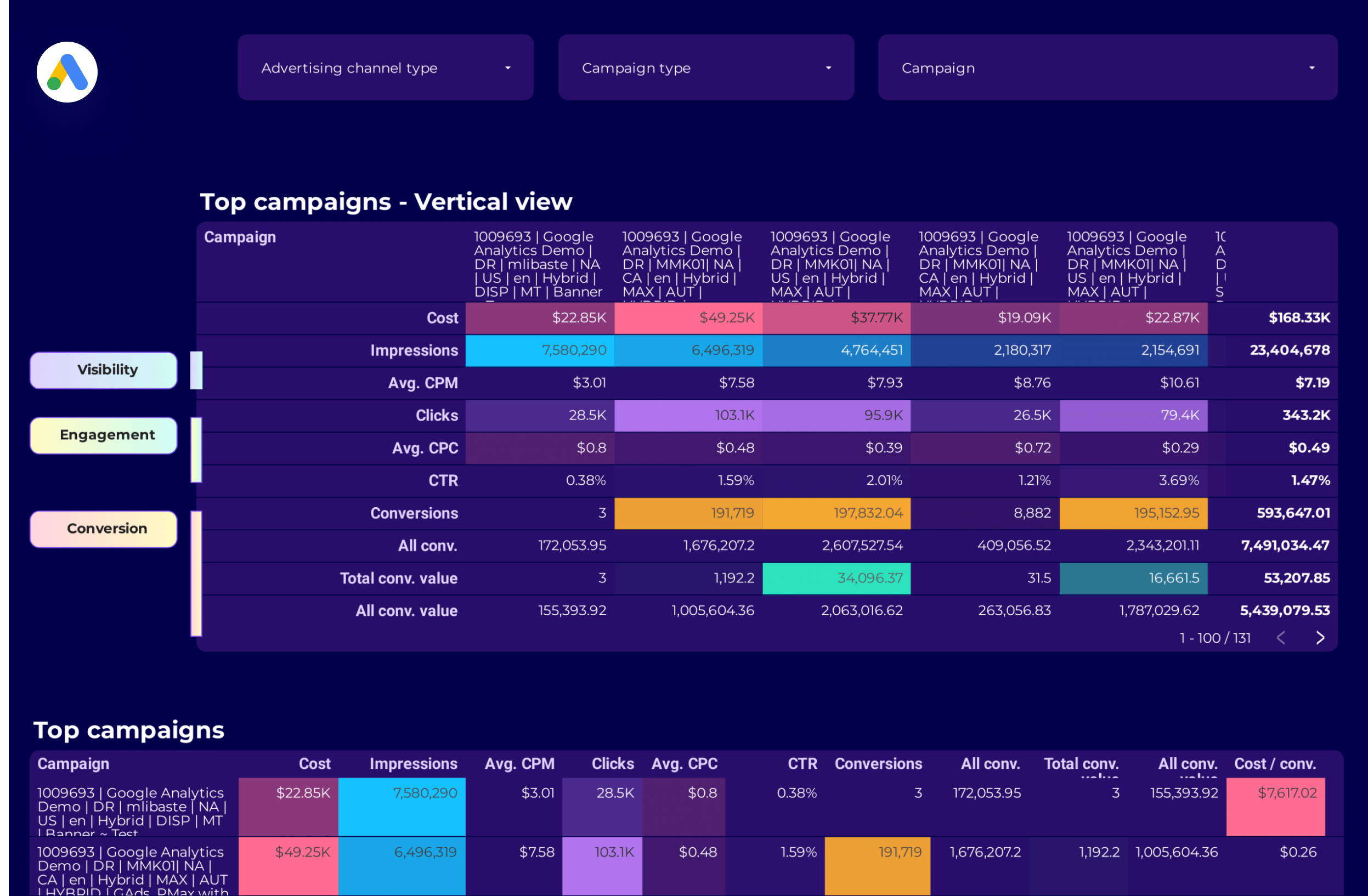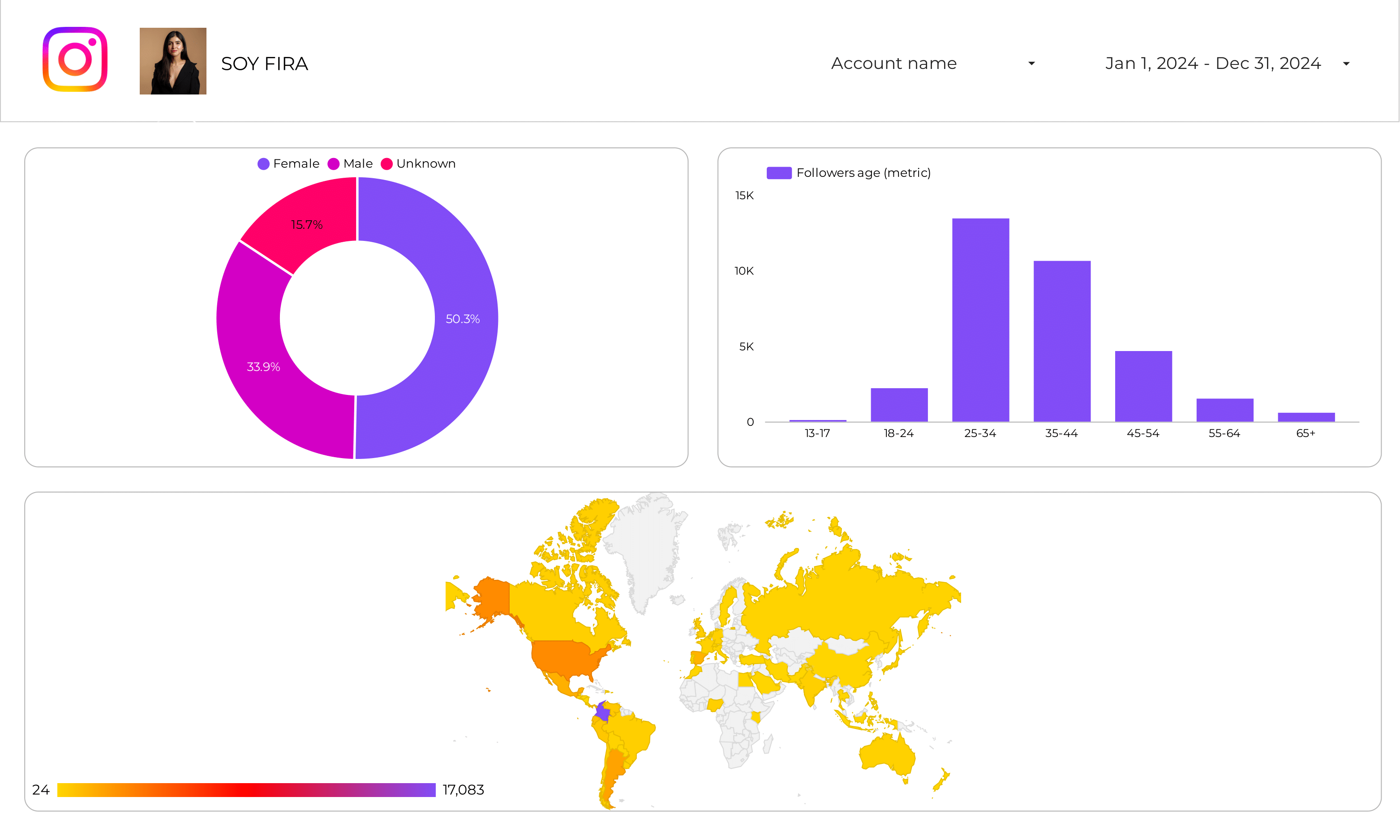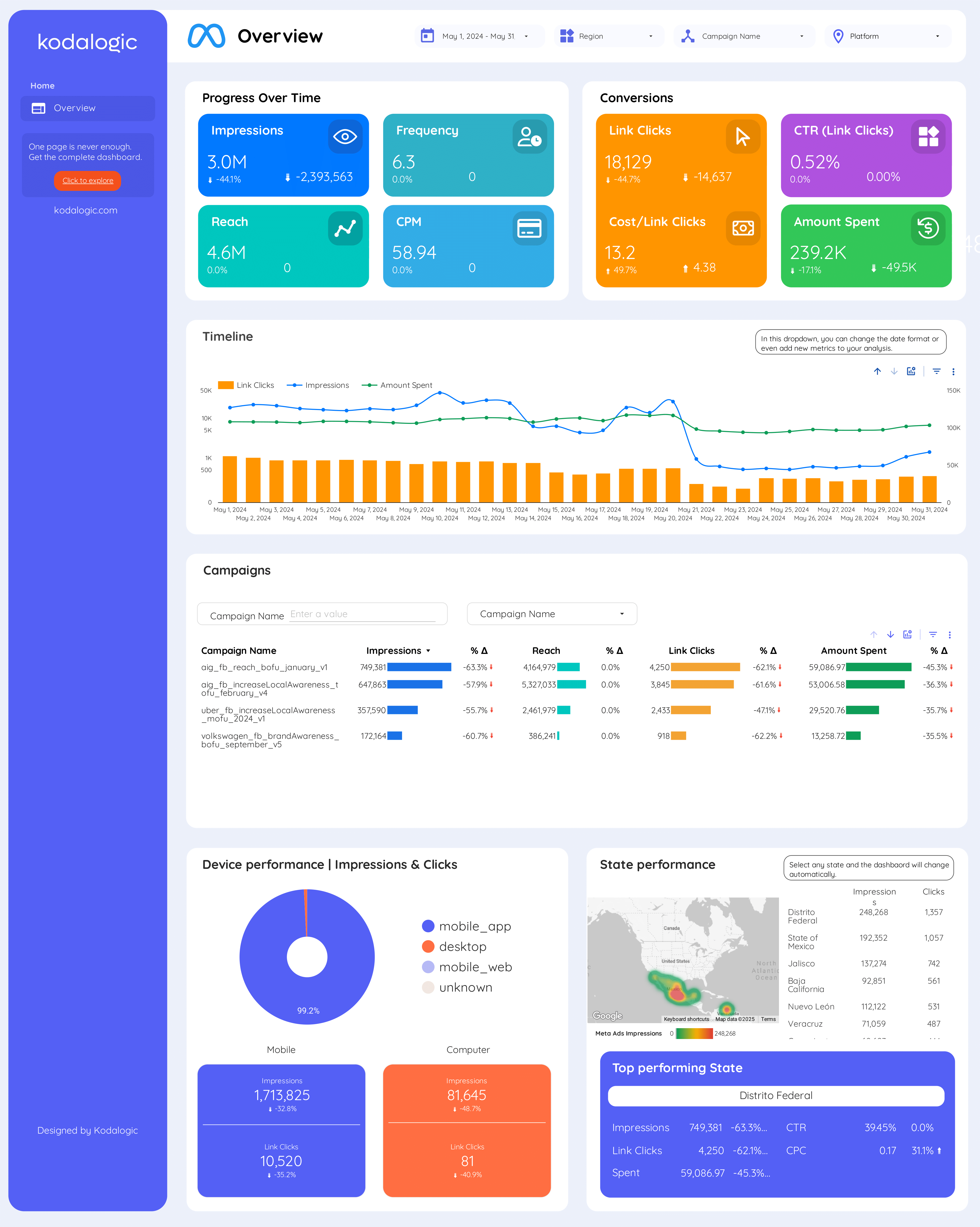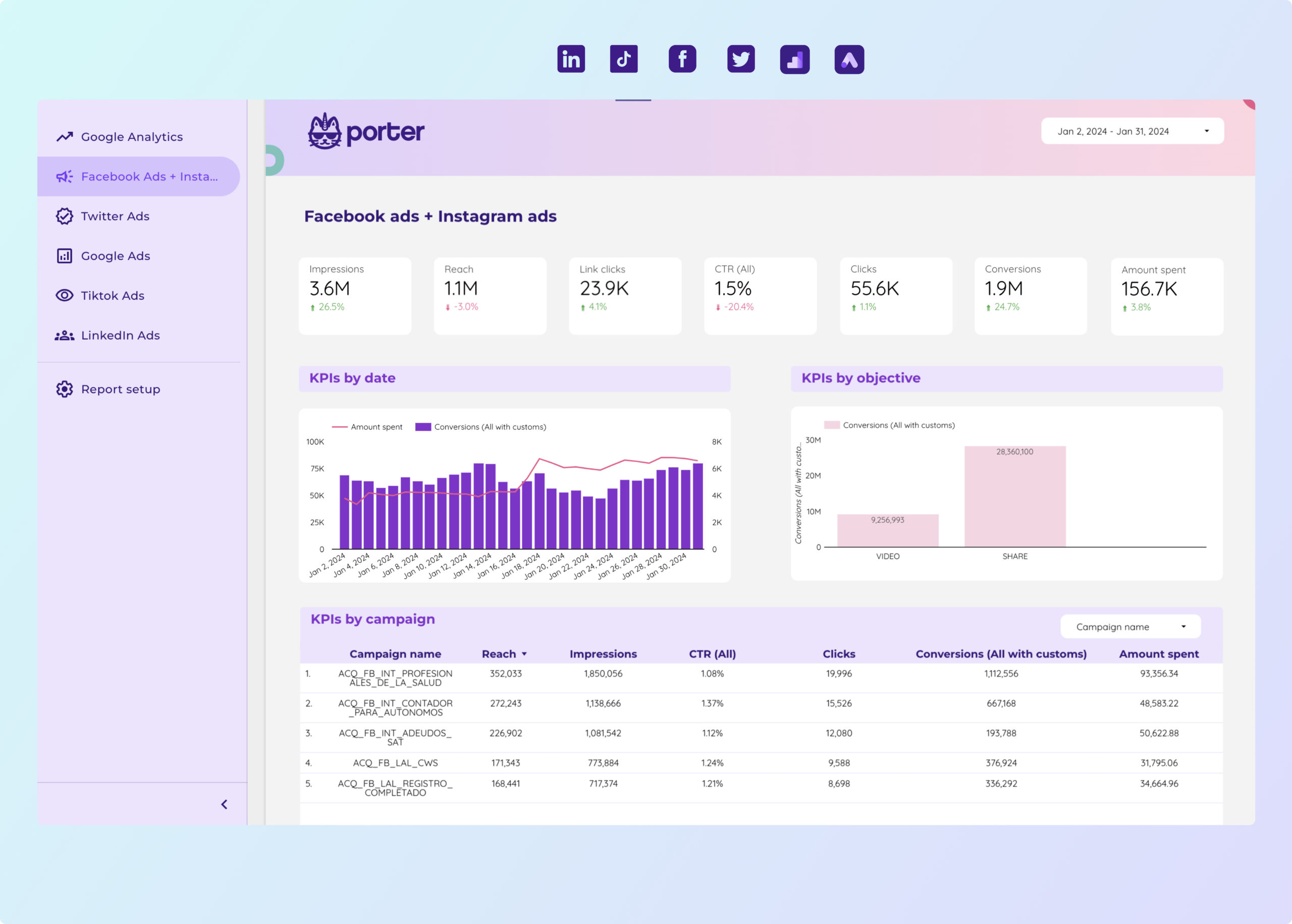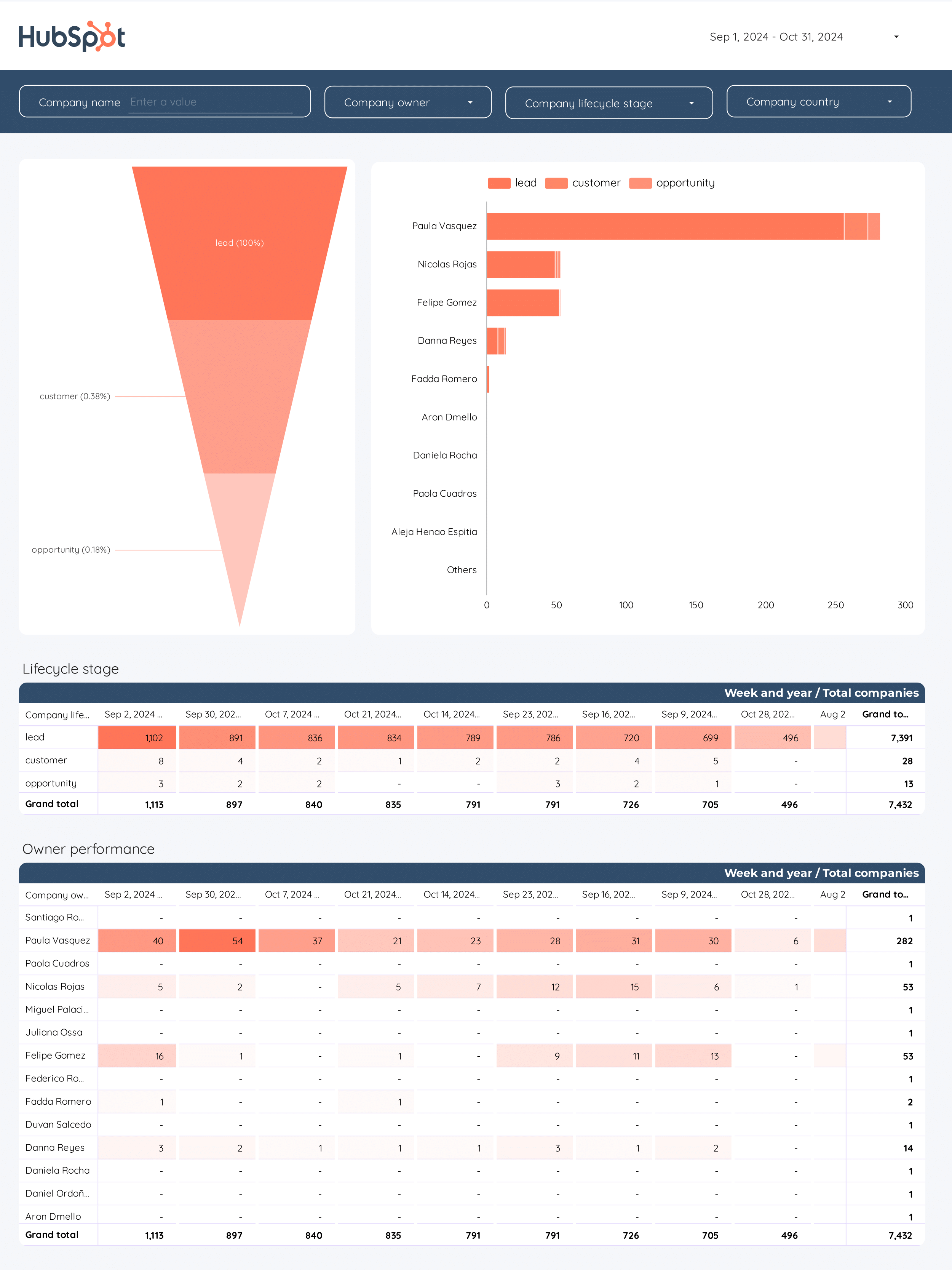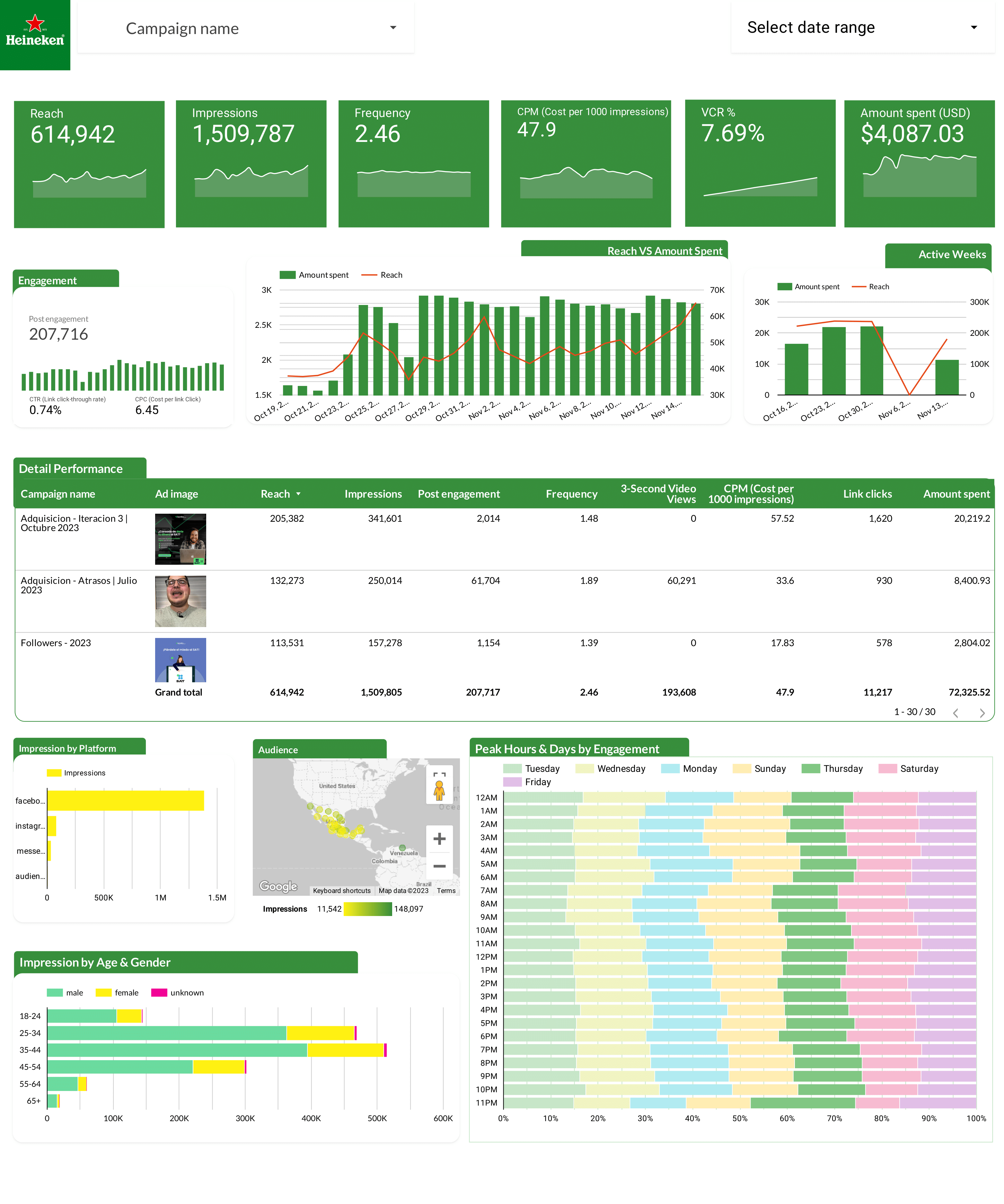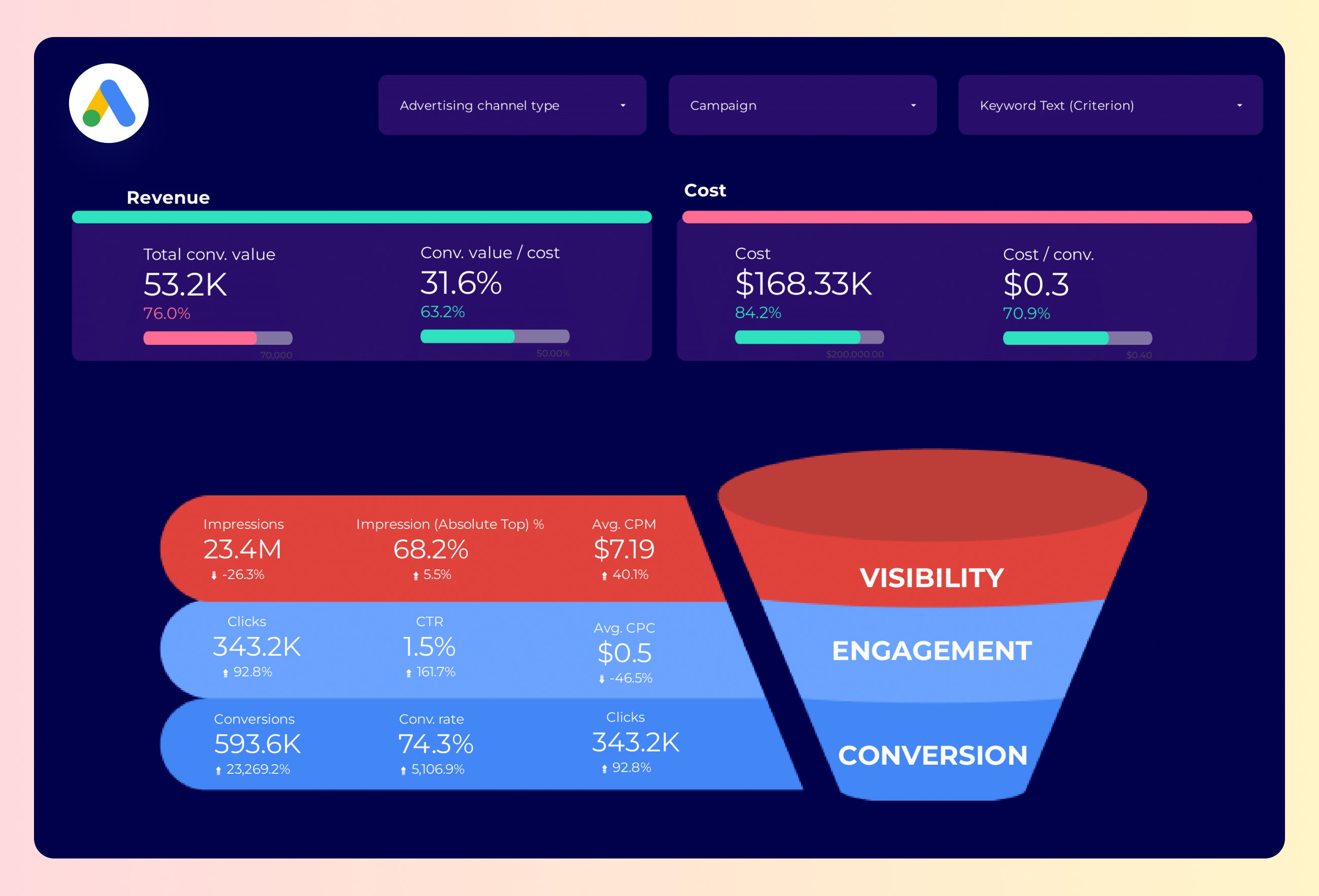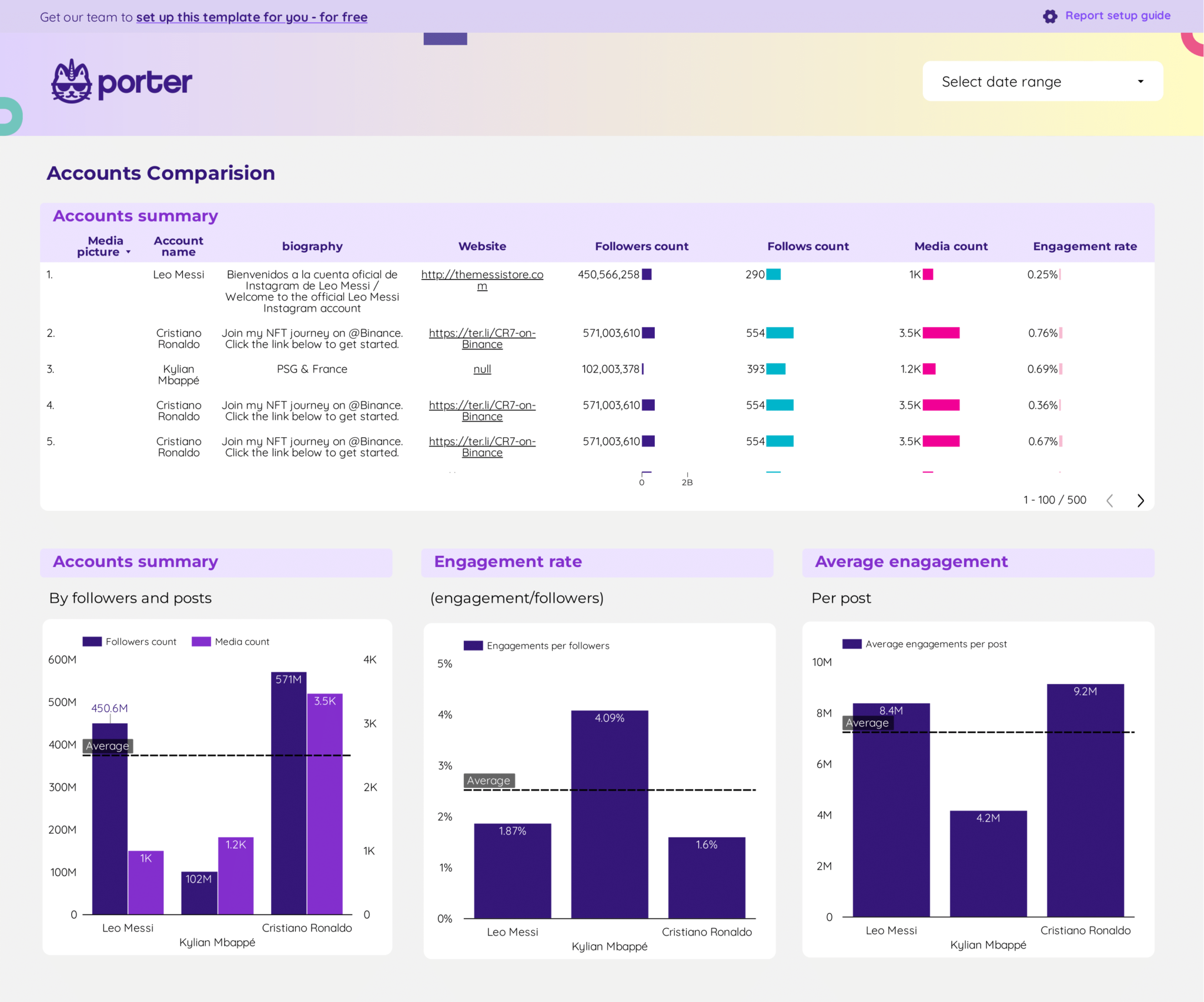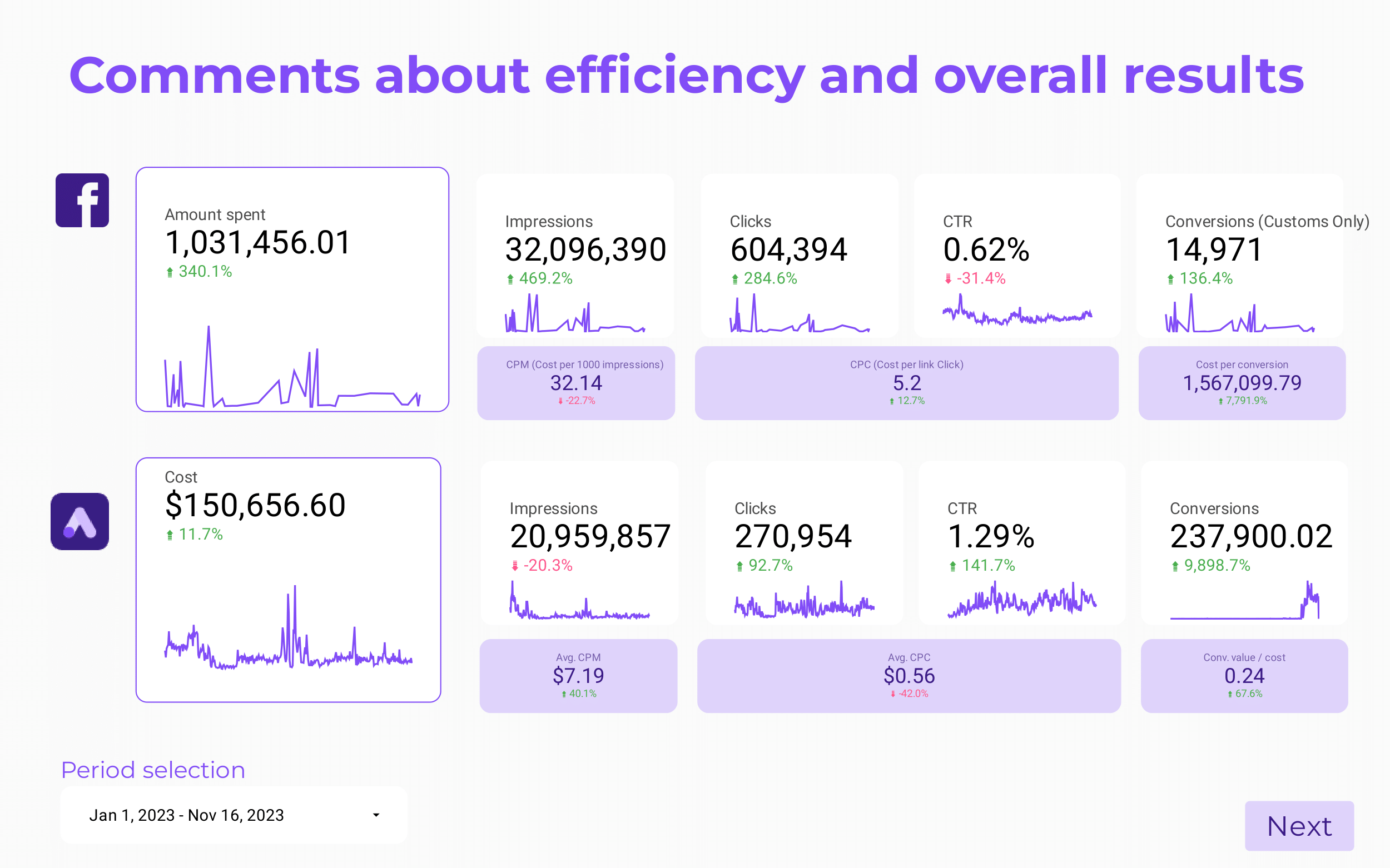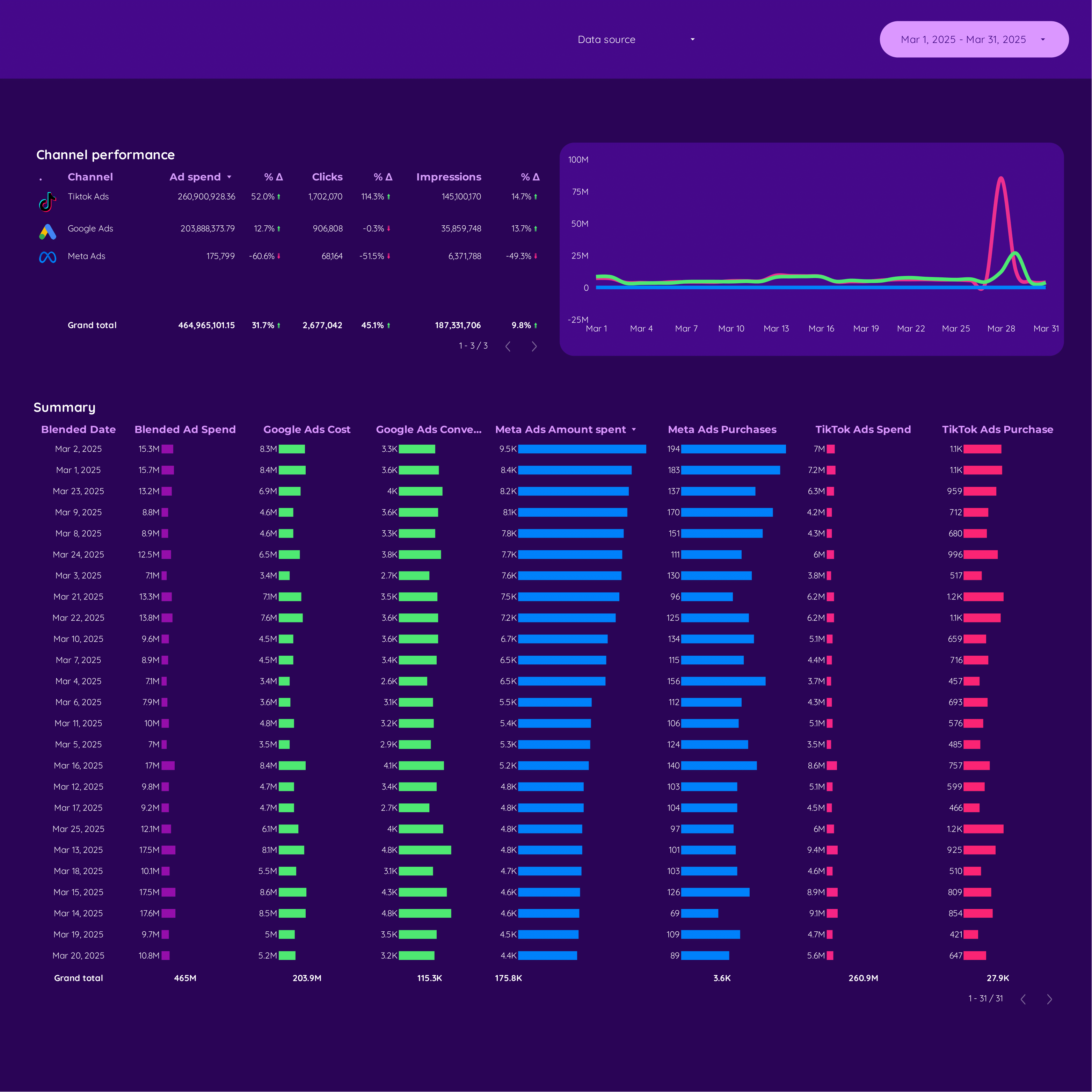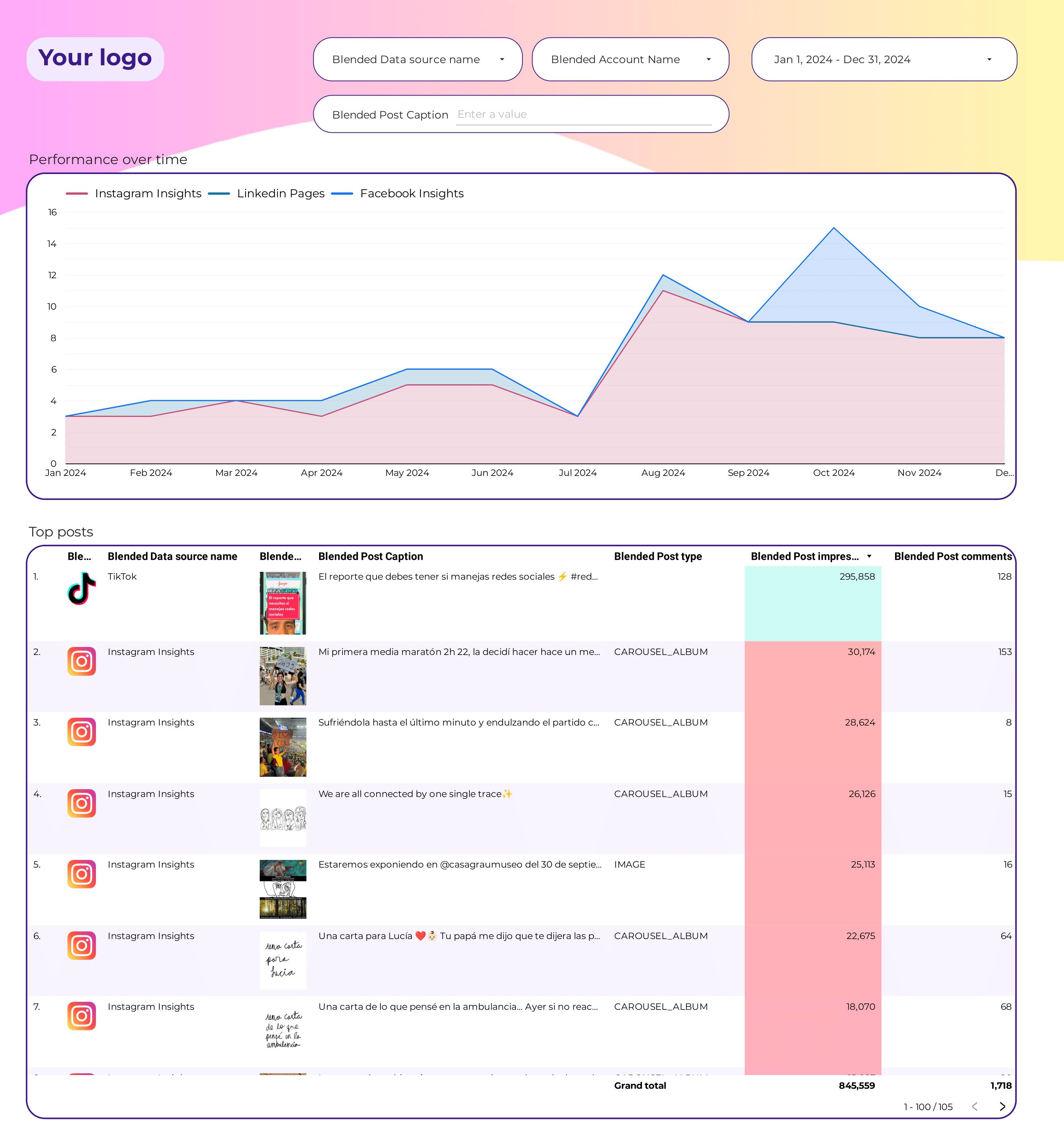What is a performance tracking report?
A performance tracking report is a document that consolidates data from multiple sources (e.g., internal databases, CRM systems, project management tools) to track and display key performance indicators (KPIs) (e.g., productivity, efficiency, quality), enabling teams and organizations to monitor performance metrics and create presentations for stakeholders and executives.
Performance tracking reports are typically created using flexible tools like Google Looker Studio, Power BI, Google Sheets, or platform-specific solutions to enable high customization and integration of multiple data sources.
What to include in a performance tracking report?
An actionable performance tracking report balances context and specificity based on the audience (executives, managers, and analysts) and their use cases.
Executive performance reports
Executive reports for CEOs, COOs, and stakeholders show the organization's overall performance impact. Reviewed weekly, monthly, or quarterly, they include:
- Performance ROI analysis: by department, using attribution for large-scale projects.
- Unit economics analysis: cost per unit, revenue per unit, and profitability from operational activities.
- Cohort analysis: employee retention, productivity, and performance by cohort (hire date, department).
- Add text for additional context to translate metrics for non-technical audiences. Present in slide decks and simplified Looker Studio reports.
Manager performance reports
Manager reports have cross-department views with drill-downs to see performance by team, project, region, team member, and task. They help align teams, define tactics, and include:
- Cross-department reporting: overall project, team, or region reporting across departments.
- Goal tracking: compare current performance vs objectives.
- Audits for prioritization and spotting issues
- Benchmarking for performance and process mapping.
- Task, project, resource, and employee analysis
Operational Performance Reports
Operational reports for analysts and team leaders have granular, customizable KPIs to solve technical issues. Monitored hourly, daily, or weekly, they cover:
- Productivity: task completion rates, time tracking, efficiency metrics.
- Quality: error rates, defect rates, quality scores.
- Resource Utilization: capacity, workload, resource allocation.
- Process Efficiency: cycle time, lead time, bottlenecks.
Operational performance reports are highly customized, built in flexible tools like Google Sheets or Looker Studio to enable data cleaning, blending, annotations, and integrating multiple sources.
How to build a performance tracking report?
To build a performance tracking report, connect your data sources, choose a template on Looker Studio or Sheets, build your queries by selecting metrics and dimensions, choose charts to visualize your data, customize the report, design and share via link, PDF or email.
Here’s the breakdown:
Connect data sources
Define and connect the data sources to bring to your report. Common sources are internal databases for operational data, CRM systems for customer interactions, project management tools for task tracking, and HR systems for employee data.
To connect your data sources, go to portermetrics.com, choose the data sources to bring to your report.
You can follow these tutorials on connecting your data:
Choose a template
Choose from dozens of performance tracking report templates in Google Sheets or Looker Studio, designed for use cases like productivity monitoring, resource allocation, process efficiency, and quality control.
Learn to copy Looker Studio templates.
While templates are the starting point. Make them specific for your business or organization. Map your specific metrics, especially custom KPIs, operational data, and all the fields and metrics that you define as "performance" and "efficiency".
Depending on your reporting tool—Google Sheets or Google Looker Studio, pick any of the dozens of templates created by our team and customers to solve your performance tracking use cases, such as productivity monitoring, resource allocation, process efficiency, and quality control.
Select metrics, dimensions, and charts
Once your report template is downloaded, you may 1)modify it or 2) create a blank page to build it from scratch. Whatever the case, setting up a query always follows these steps:
- Select the data source and the account connected to it
- Choose metrics (e.g. Task completion, efficiency, quality scores, etc.).
- Choose breakdowns to segment your data (e.g. by date, team, project, etc.)
You can follow these tutorials on adding data to your reports
Design
To make your performance tracking reports truly white-label you can add logos, colors, fonts, and styling to mirror your brand.
Follow these tutorials to design your performance tracking reports:
Share
Share your performance tracking reports via links, PDF, schedule emails, and control permissions.
KPIs to include in a performance tracking report?
Performance tracking reports should include a mix of productivity, efficiency, quality, and resource utilization metrics and KPIs to fully understand the performance of operations towards organizational goals. They include:
Productivity KPIs measure the output and efficiency of processes:
- Task metrics: completion rates, time spent, task backlog
- Efficiency metrics: cycle time, lead time, throughput
- Quality metrics: error rates, defect rates, quality scores
Efficiency KPIs compare your operational outputs to the cost, including:
- Resource Utilization: capacity, workload
- Cost Efficiency: cost per unit, cost per task
- Process Efficiency: cycle time, lead time
Effectiveness KPIs compare the input with the output from one process stage to another
- Productivity: output per hour
- Quality: defect rate, rework rate
- Resource Utilization: utilization rate
Operational and cost KPIs show the bottom-line impact of your performance tracking:
- Operational: output, efficiency
- Cost: operational expenses, payroll
- Efficiency: ROI, cost savings
- Effectiveness: productivity gains, quality improvements
To analyze these performance KPIs, segment them by:
- Department: operations, HR, finance
- Time: Hourly, daily, weekly, monthly
- Project: phase, objective
- Team: team member, role, responsibility
- Process: steps, stages, bottlenecks
